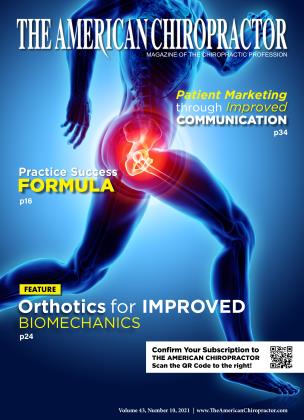Preexisting versus Causally Related
October 1 2021 William OwensPreexisting versus Causally Related
October 1 2021 William OwensFrom an engineering perspective, tissue in the human body is no different from any other non-organic material. It has tolerances, responds to forces, can wear out, and can be permanently altered because of traumatic forces.
In a recent study funded by the National Institutes of Health, Wilson et al. (2021) stated, “The in vivo [taking place in a living organism] biomechanical response of biological tissues to mechanical stimuli are often indicative of health and normative function and yet remain largely undocumented in stiff tissues of the musculoskeletal system. Tissue stiffness is contingent on the physical and chemical composition of the tissue.” (p. 1) That means that not all tissues are created equal and present varying degrees of strength and health in injury victims.
The authors also stated, “The intervertebral disc (IVD) is a load-bearing tissue of the musculoskeletal system that connects adjacent vertebrae in the spinal column. The IVD consists of two primary structural compartments: a compliant nucleus pulposus (NP) containing hydrophilic glycosaminoglycans (GAGs) and a stiff annulus fibrosus (AF) comprised largely of type I collagen. The IVD enables the flexibility of the spinal column within a safe range of motion while transmitting load and reducing stress from body weight and natural muscle activity within the body.” (p. 2) However, when traumatic forces exceed the threshold of this tissue, it creates damage resulting in functional deficits.
They continued by reporting, “Upon trauma or overuse, the tissue can degrade and lead to intervertebral disc degeneration (IVDD), affecting approximately 25% of the global adult population. IVDD can result in instability and, in extreme cases, severe chronic pain. The two primary phenotypes [physical expression] for spinal pain, end plate-driven and AF-driven degeneration, can be distinguished by their physical origin as well as pain association with both eventuating into complete disc failure. On a tissue level, later-stage end plate-driven degeneration can be detected via modic changes. Annulus-driven degradation can be identified through tissue fissures.” (p. 2)
That means that how IVD tissue responds to physical stress is predictable because we know its properties. Therefore, we can tell if the injury is causally related or preexisting by looking at the annulus fibrosis and surrounding end plates. The body will answer our questions.
In terms of specific injuries, the paper showed that “the C5/C6 IVD has been shown to be particularly susceptible to damage from aging or traumatic event.” (p. 7) “The biomechanical function of the intervertebral disc (IVD)) is a critical indicator of tissue health and pathology. The mechanical responses (displacements, strain) of the IVD to physiologic movement can be spatially complex and depend on tissue architecture, consisting of distinct compositional regions and integrity...” (p. 1) It is then critical to work with doctors who not only understand the effects of trauma to the human spine, but also those who know what to look for to determine causation and identify the cause of persistent functional losses.
Reference:
1. Wilson, R. L., Bowen, L., Kim, W., Cai, L., Schneider, S. E., Nauman, E. A., & Neu, C. P. (2021). In vivo intervertebral disc deformation: intratissue strain patterns within adjacent discs duringflexion-extension. Scientific reports, 11.
Dr William Owens Jr is currently in private practice in Buffalo, NY. His practice employees 4 Doctors of Chiropractic and 2 Physical Therapists. He is President and CEO of the National Spine Management Group, LLC and Clinical Director of the Fellowship in Spinal Biomechanics and Trauma. Additionally, Dr. Owens is Adjunct Faculty in Family Medicine at the State University of New York at Buffalo Jacobs School of Medicine. He can be reached at 716.228.3847.
 View Full Issue
View Full Issue












